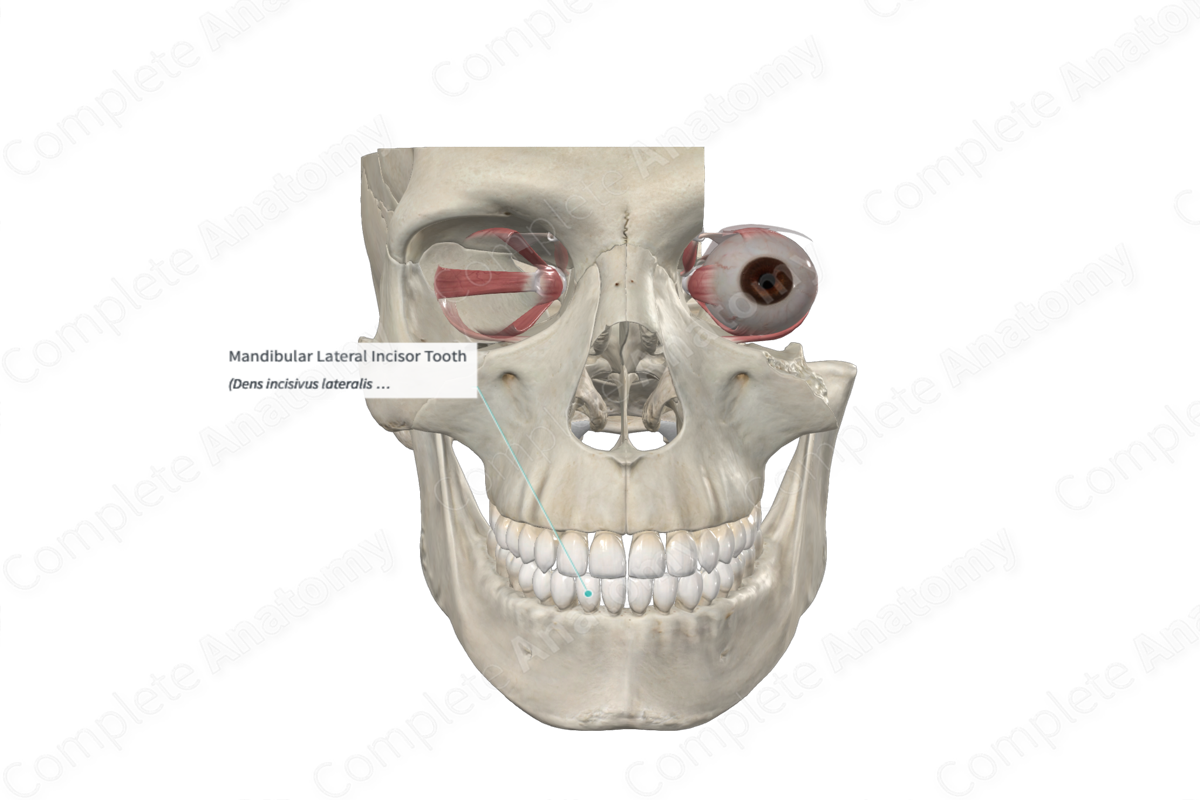
Quick Facts
Location: Distal to mandibular central incisor tooth; mesial to mandibular canine tooth.
Eruption: 13 months (deciduous); 7 to 8 years (permanent).
Key Features: Crown, root, incisal margin, cingulum, and lingual fossa.
Nerve Supply: Inferior dental plexus.
Arterial Supply: Incisive branch of inferior alveolar artery.
Key Features & Anatomical Relations
The mandibular lateral incisor tooth is one of the two incisor teeth that are found in a quadrant of the mandibular dental arcade. It includes the following bony features:
- parts: crown, root, and cervical line;
- surfaces: incisal margin, and labial, lingual, mesial, and distal surfaces;
- landmarks: cingulum, marginal ridges, and lingual fossa.
The mandibular lateral incisor tooth is located:
- distal to the mandibular central incisor tooth;
- mesial to the mandibular canine tooth.
The root of the mandibular lateral incisor tooth is lodged in a dental alveolus of the mandible.
Development
The deciduous mandibular lateral incisor tooth undergoes calcification during the sixteenth week in utero, with the development of the crown being completed during the third month after birth. Eruption of this tooth occurs during the thirteenth month after birth and the development of the root is completed during the second year.
The permanent mandibular lateral incisor tooth undergoes calcification during the third to fourth months after birth, with the development of the crown being completed during the fourth to fifth years. Eruption of this tooth occurs during the seventh to eighth years and the development of the root is completed during the tenth year (Nelson, 2014).
Function
As with all incisors, the mandibular lateral incisor tooth is blade-like and specializes in the cutting (incision) of food during mastication.
References
Nelson, S. J. (2014) Wheeler's Dental Anatomy, Physiology and Occlusion. 10th edn.: Elsevier Health Sciences.
Learn more about this topic from other Elsevier products




